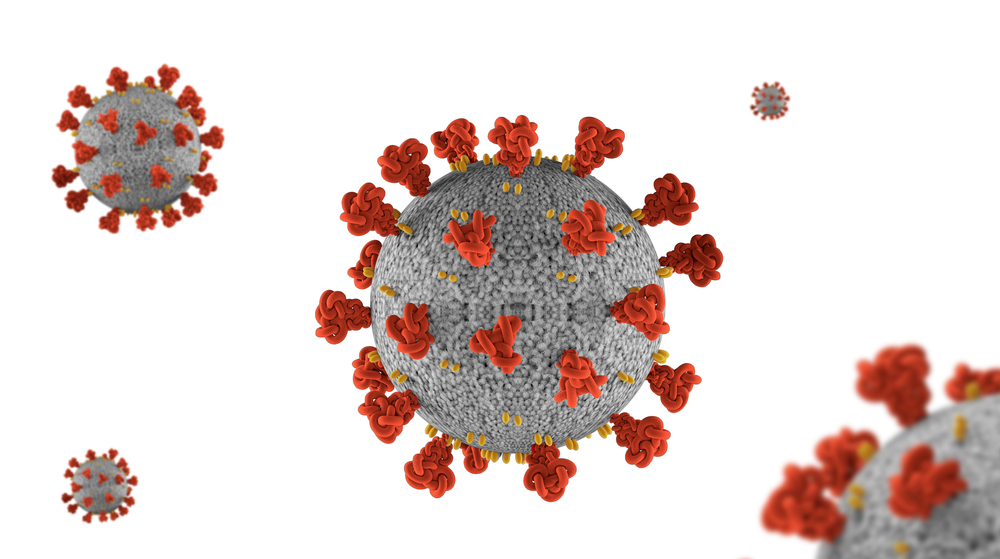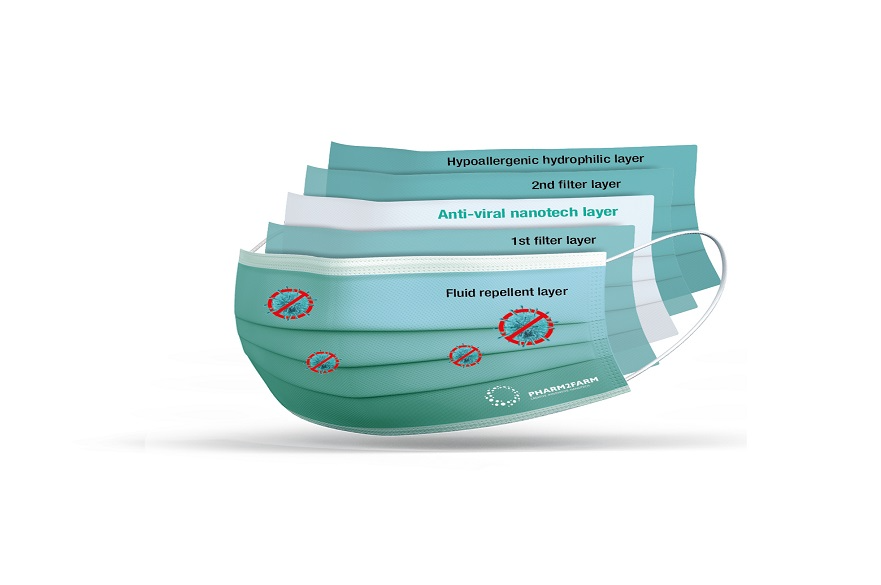.png) Interview conducted by Emily Henderson, B.Sc.Nov 13 2020
Interview conducted by Emily Henderson, B.Sc.Nov 13 2020In this interview, Dr. Gareth Cave speaks to AZoNano about how he has designed a new antiviral face mask that can kill viruses including COVID-19, on contact.
What provoked your research into nanotechnology and its potential role in COVID-19 and other viruses?
I have been working in nanotechnology for nearly two decades now, everything from cancer therapies to iron-enriched potatoes. When the pandemic first hit, we started making hand sanitizer for the NHS, care homes, and local businesses, but all the time I was thinking about what other ways we could make a difference.
Then, Innovate UK opened a funding call, for scientists like me to prime some research that may make a difference. That then enabled me and the team at Pharm2Farm to test the antiviral properties of our nanomaterials, and then quickly move the technology forward to incorporate it into an antiviral face mask.
The funds from Remote Monitored Systems plc (the company behind Pharm2Farm) then funded all the equipment I needed to make 5 million masks a month. The only problem we have now is the UK alone, the demand for PPE facemasks is about 2 million a day!”

Image Credit: GEMINI PRO STUDIO/Shutterstock.com
How are face masks effective at stopping the spread of viruses?
The masks adopt the same barrier technology that is incorporated into a fluid-resistant Type IIR surgical mask; however, we have incorporated two of these layers rather than just one. The result is that the mask has a bacterial filtration efficiency (BFE) of 99.98%.
However, the problem with just having a filter is that you can end up trapping any nasty pathogens, like SARS-CoV-2, in the mask. If the filter then gets compromised (i.e. breaks) you could end up inhaling or exhaling a large concentration of the very thing you are trying to stop.
So, by adding an antiviral layer to the mask, we added an active mechanism for killing the viruses not just stopping it. Trap it, Kill it, Bin it!
What are the current limitations of the usual three-ply face masks?
All the disposable 3-ply mask that are commonly available are not readily biodegradable, we are currently testing recyclable and compostable materials for a future generation of masks.
Our biggest limitation now is trying to scale up so that everyone around the world can have access to this anti-viral technology. We deliberately targeted the disposable surgical type masks as they have a price point that is accessible by everyone, however, they are not a tight-fitting mask like the more expensive KN95 “duckbill” models.
The next phase for us is to form strategic partnerships with some of these other face mask manufacturers and offer them our antiviral layer so that they can adapt it into their products too. Only together will we reach the demand.
Please could you give an overview of the different layers in the mask?
The outermost layer is a hydrophobic spun-bonded polypropylene layer that repels moisture and bodily fluids, including blood. Whereas the innermost layer is a hypoallergenic hydrophilic spun-bonded polypropylene layer designed to feel comfortable on the face and highly breathable.
One of the novel steps we have incorporated is to bind the two non-woven melt blown polypropylene filter layers directly onto the surface of the inner and outer layers, so to the naked eye, they are one layer each.
We have also added pigment to the filter layer to reduce any possible allergic reactions to the dye. The inner layer is the antiviral one and contains our patented copper nanoparticle formulation that has been melted onto the fabric enough for it not to fall away, but not completely engulf it, so it retains its active surface.
 Image Credit: https://www.ntu.ac.uk/about-us/news/news-articles/2020/11/scientists-develop-facemask-which-can-kill-viruses-on-contact
Image Credit: https://www.ntu.ac.uk/about-us/news/news-articles/2020/11/scientists-develop-facemask-which-can-kill-viruses-on-contact
How do the nano-copper molecules interact with the virus’s DNA, causing it to die and stop replicating?
Research suggests that the copper surface produces free electrons that enter the virus and produces free radicals that then go on destroy the DNA and RNA (Reference: https://www.smithsonianmag.com/science-nature/copper-virus-kill-180974655/)
What role does the shape of the nanoparticles play in the mask's effectiveness?
Our nanoparticles are spherical in appearance, this results in a large surface area to volume ratio. This increase in effective surface area and the fact that the nanoparticles are in the same size domain as the virus (~100 nm https://www.ncbi.nlm.nih.gov/pmc/articles/PMC7224694/) results in a highly efficient virucide.

Image Credit: Kateryna Kon/Shutterstock.com
Your mask is also described as being a Type IIR, what does this mean?
Type IIR face masks need to be certified to EN14683 standards, i.e. a medical face mask that prevents at least 99.8% of particles with a diameter of 0.1 μm from reaching the patient or working surfaces. They were tested in the direction of exhalation (inside to outside) and provide efficient bacterial filtration.
They must also include a splash-resistant layer to protect against blood and other bodily fluids. https://www.dental-nursing.co.uk/news/covid-19-a-guide-to-face-masks#:~:text=What%20is%20a%20Type%20IIR,blood%20and%20other%20bodily%20fluids.
Do you believe that these face masks could help to reduce the spread of COVID-19? When will these masks be commercially available?
We know they kill a wide range of viruses including coronavirus, and it has already been proven that face coverings slow down the spread of COVID-19, so, yes.
These masks will be commercially available in time for Christmas this year.
Nanotechnology is now being implemented in a wide variety of research. What other roles does nanotechnology play within the medical industry?
We are looking at our materials for a wide range of applications, including new treatments of brain cancer, Alzheimer’s disease, and cataracts.
What are the next steps in your research?
I have 9 Ph.D. candidates working under my supervision as well as master's research students and postdocs. Their research spans possible treatments for Alzheimer's disease, brain cancer therapies, antimicrobial surfaces, proteomics through to vertical farming, and chicken feed.
So, we are never short of ideas, just time!
Where can readers find more information?
About Dr. Gareth Cave
Dr. Gareth Cave is a principal lecturer in the school of Science and Technology at Nottingham Trent University.
Dr. Cave's main areas of interest are:
- Therapeutic transport devices

- MRI / NMR contrast agents
- Supramolecular chemistry
- Green chemistry - with emphasis on physical-life sciences interface.
Dr. Cave is also a member of the Institute of Nanotechnology, American Chemical Society, Green Chemistry Network, International Union of Crystallography, and the Royal Society of Chemistry.
Disclaimer: The views expressed here are those of the interviewee and do not necessarily represent the views of AZoM.com Limited (T/A) AZoNetwork, the owner and operator of this website. This disclaimer forms part of the Terms and Conditions of use of this website.